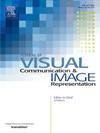Scale-invariant mask-guided vehicle keypoint detection from a monocular image
IF 2.6
4区 计算机科学
Q2 COMPUTER SCIENCE, INFORMATION SYSTEMS
Journal of Visual Communication and Image Representation
Pub Date : 2025-02-01
DOI:10.1016/j.jvcir.2025.104397
引用次数: 0
Abstract
Intelligent vehicle detection and localization are important for autonomous driving systems, particularly traffic scene understanding. Robust vision-based vehicle localization directly affects the accuracy of self-driving systems but remains challenging to implement reliably due to differences in vehicle sizes, illumination changes, background clutter, and partial occlusion. Bottom-up-based vehicle detection using vehicle keypoint localization efficiently provides semantic information for partial occlusion and complex poses. However, bottom-up-based approaches still struggle to handle robust heatmap estimation from vehicles with scale variations and background ambiguities. This paper addresses the problem of predicting multiple vehicle locations by learning semantic vehicle keypoints using a multi-resolution feature extractor, an offset regression branch, and a heatmap regression branch network. The proposed pipeline estimates the vehicle keypoint by effectively eliminating similar background features using a mask-guided heatmap regression branch and emphasizing scale-adaptive heatmap features in the network. Quantitative and qualitative analyses, including ablation tests, verify that the proposed method is universally applicable, unlike previous approaches.
求助全文
约1分钟内获得全文
求助全文
来源期刊

Journal of Visual Communication and Image Representation
工程技术-计算机:软件工程
CiteScore
5.40
自引率
11.50%
发文量
188
审稿时长
9.9 months
期刊介绍:
The Journal of Visual Communication and Image Representation publishes papers on state-of-the-art visual communication and image representation, with emphasis on novel technologies and theoretical work in this multidisciplinary area of pure and applied research. The field of visual communication and image representation is considered in its broadest sense and covers both digital and analog aspects as well as processing and communication in biological visual systems.
 求助内容:
求助内容: 应助结果提醒方式:
应助结果提醒方式:


